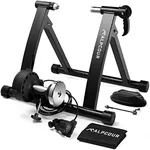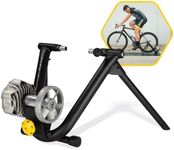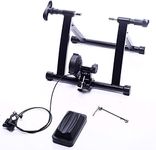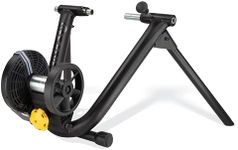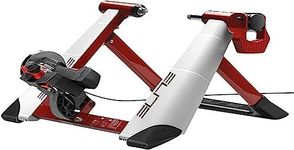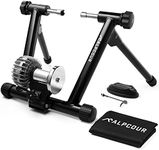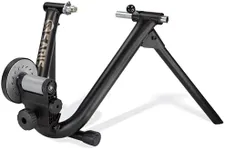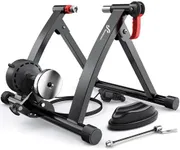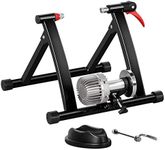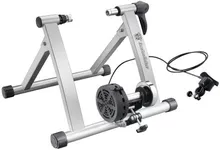Buying Guide for the Best Mountain Bike Trainer Stand
Choosing the right mountain bike trainer stand can significantly enhance your indoor training experience. A trainer stand allows you to convert your outdoor bike into an indoor exercise machine, making it possible to train regardless of weather conditions. When selecting a mountain bike trainer stand, it's important to consider several key specifications to ensure you get the best fit for your needs. Understanding these specs will help you make an informed decision and get the most out of your training sessions.Resistance TypeThe resistance type determines how the trainer stand simulates the feel of riding on different terrains. There are three main types: fluid, magnetic, and direct drive. Fluid trainers offer a smooth and progressive resistance that increases with your speed, closely mimicking outdoor riding. Magnetic trainers provide adjustable resistance levels, making them versatile but sometimes less smooth. Direct drive trainers replace your rear wheel and offer the most realistic and quietest ride, but they are usually more expensive. Choose fluid if you want a realistic feel, magnetic for versatility, and direct drive for the best performance and quiet operation.
CompatibilityCompatibility refers to whether the trainer stand can accommodate your specific mountain bike. This includes wheel size, axle type, and frame design. Most trainer stands are designed to fit a range of wheel sizes, typically from 26 to 29 inches. Axle compatibility is also crucial; ensure the trainer can fit your bike's quick-release or thru-axle. Some stands may require adapters for certain bikes. Check your bike's specifications and compare them with the trainer's compatibility details to ensure a proper fit.
StabilityStability is essential for a safe and effective workout. A stable trainer stand will prevent your bike from wobbling or tipping over during intense sessions. Look for stands with a wide base and sturdy construction. Some models come with adjustable feet to ensure they remain level on uneven surfaces. If you plan to do high-intensity training or sprints, prioritize stability to avoid accidents and ensure a smooth ride.
Noise LevelNoise level is an important consideration, especially if you live in an apartment or train indoors with others around. Fluid and direct drive trainers are generally quieter than magnetic trainers. If noise is a concern, look for models specifically designed to minimize sound. Reading user reviews can also provide insights into the actual noise levels experienced by other users. Choose a quieter model if you need to keep the noise down during your workouts.
Portability and StoragePortability and storage are important if you have limited space or plan to move the trainer frequently. Some trainer stands are foldable and lightweight, making them easy to store and transport. Others are more robust and may require a dedicated space. Consider how often you will need to move the trainer and where you will store it when not in use. Opt for a portable model if you need flexibility, or a more permanent setup if you have a dedicated training area.
Connectivity and Smart FeaturesConnectivity and smart features can enhance your training experience by allowing you to connect to apps and devices for interactive workouts. Some trainer stands come with built-in sensors and Bluetooth or ANT+ connectivity, enabling you to track your performance and join virtual training platforms. If you enjoy structured workouts or want to compete with others online, look for a trainer with these smart features. If you prefer a simpler setup, a basic model without connectivity may suffice.
